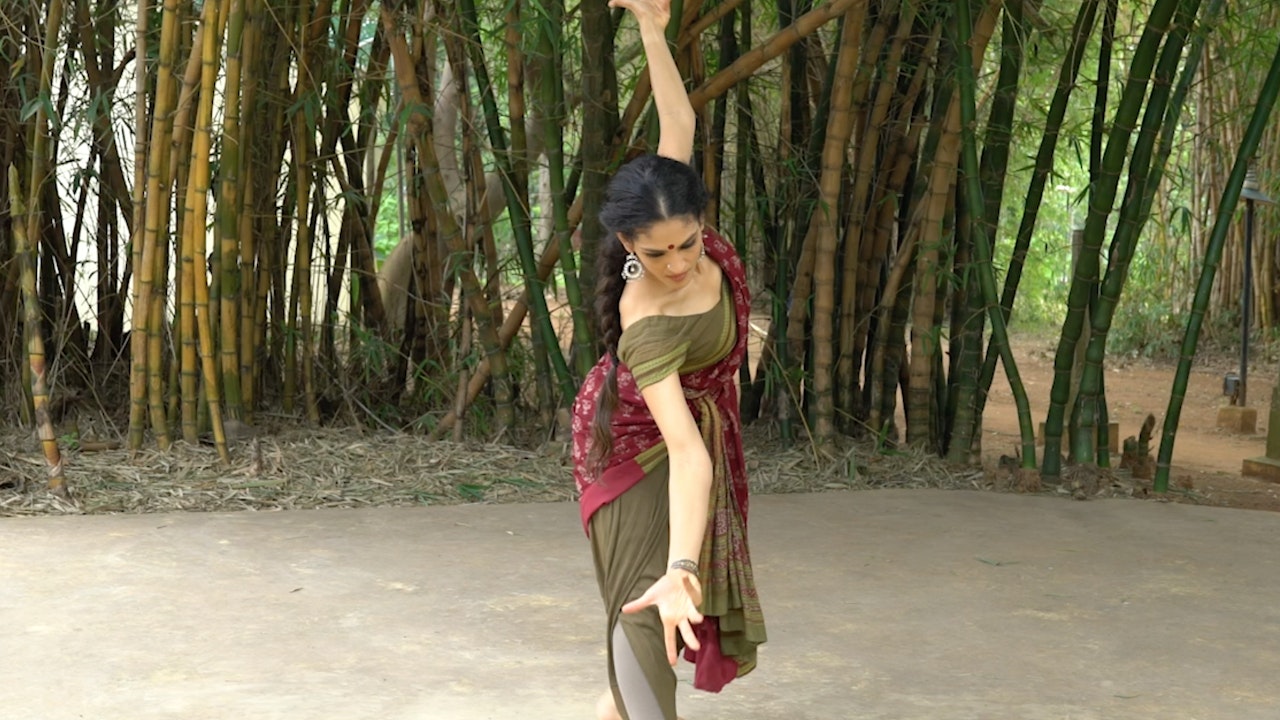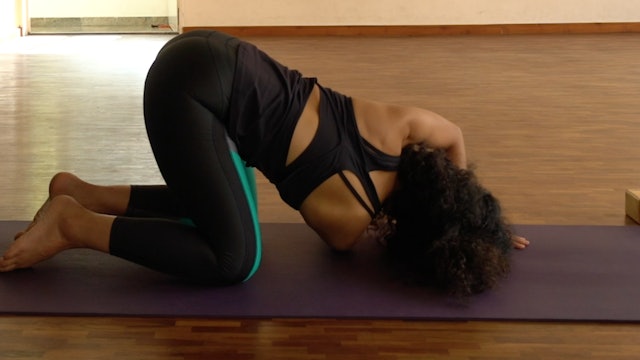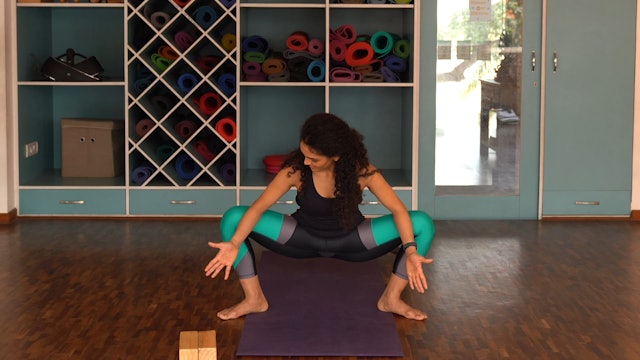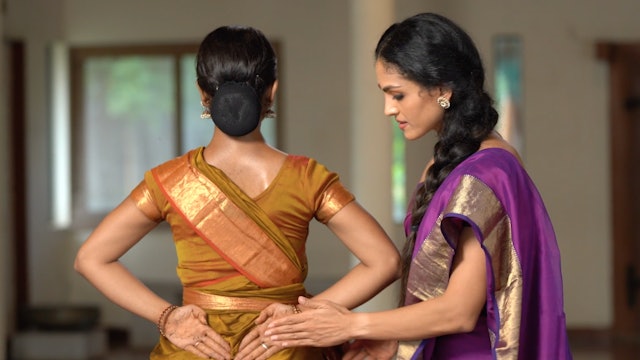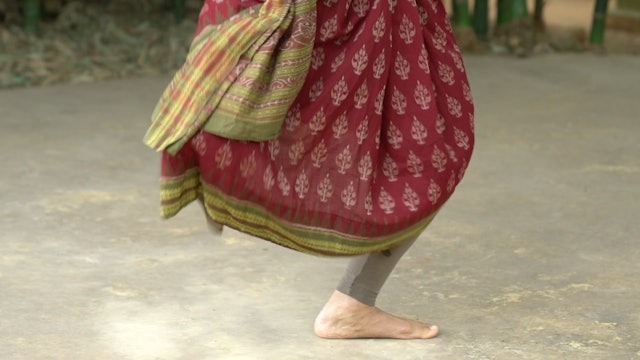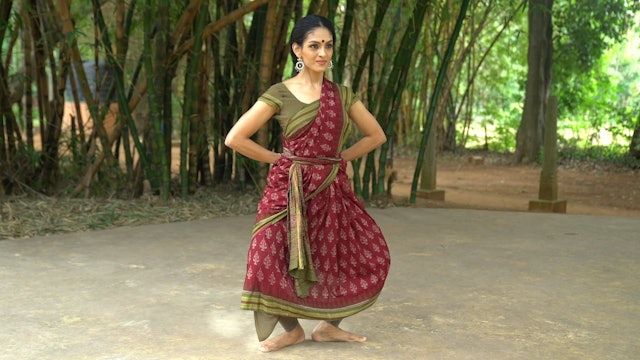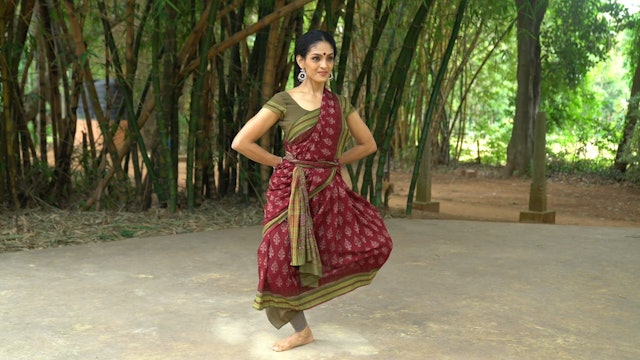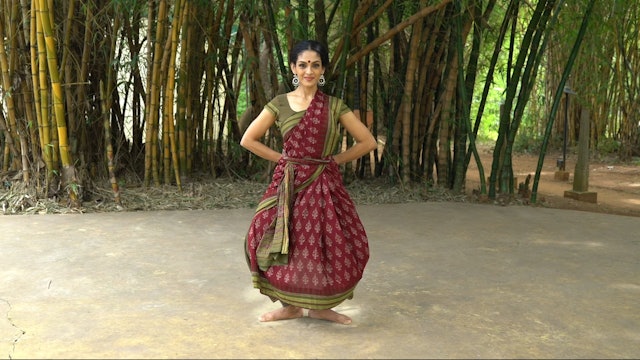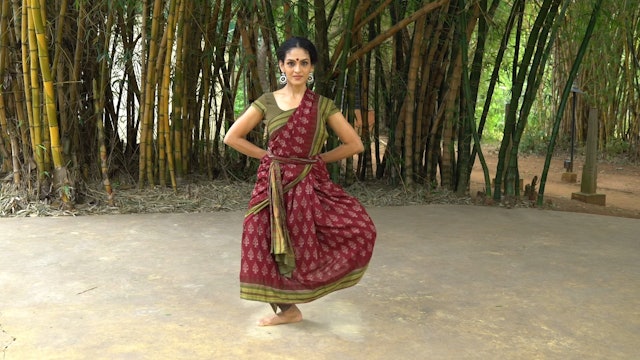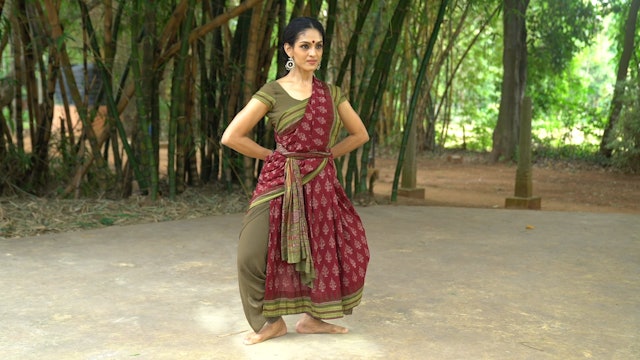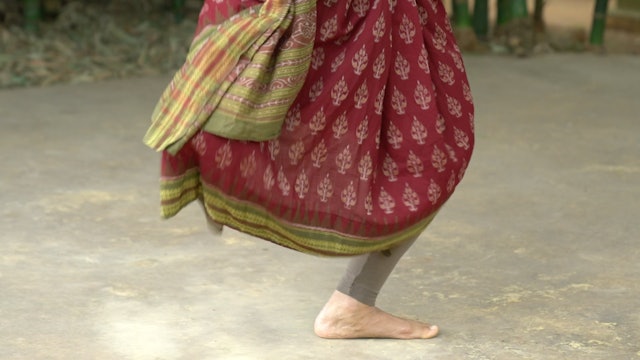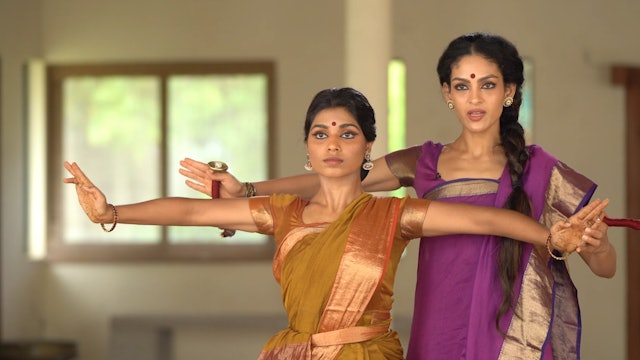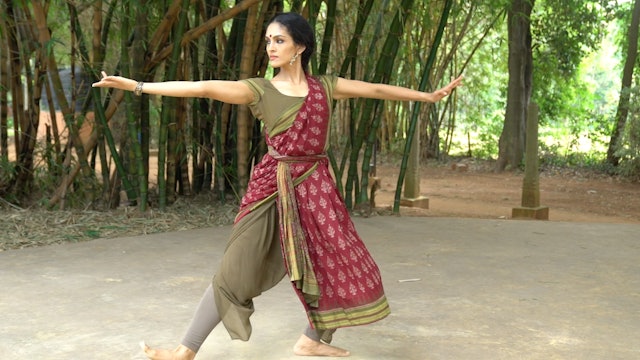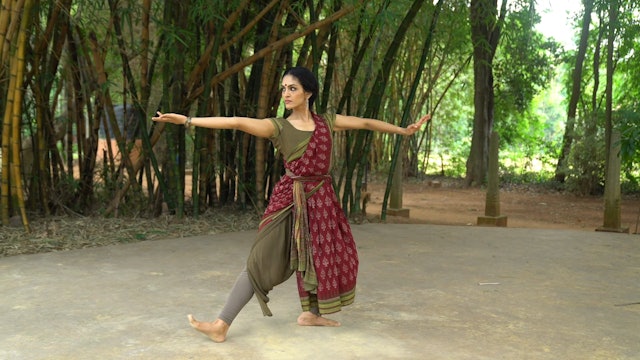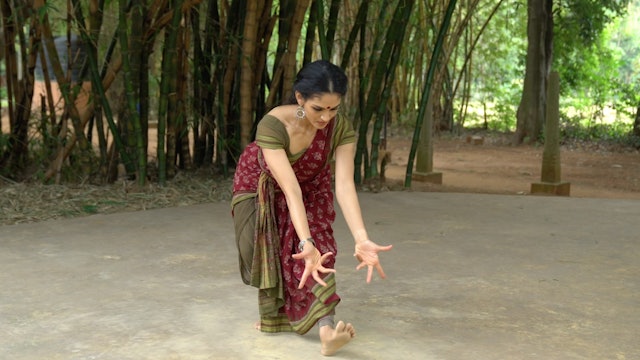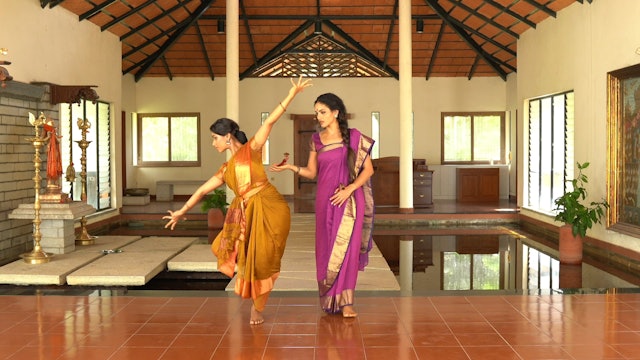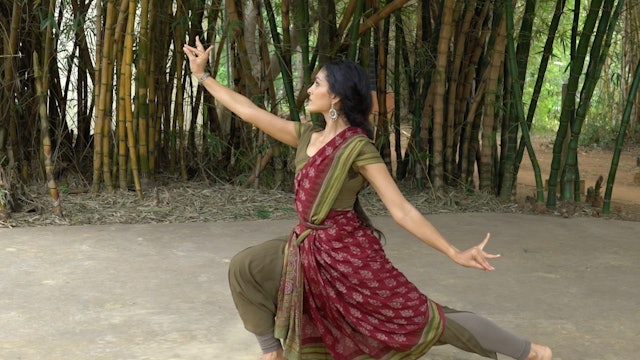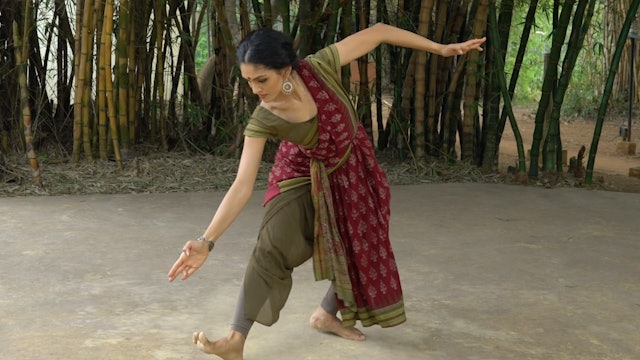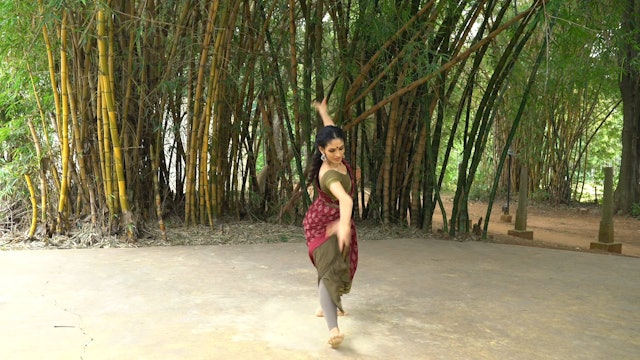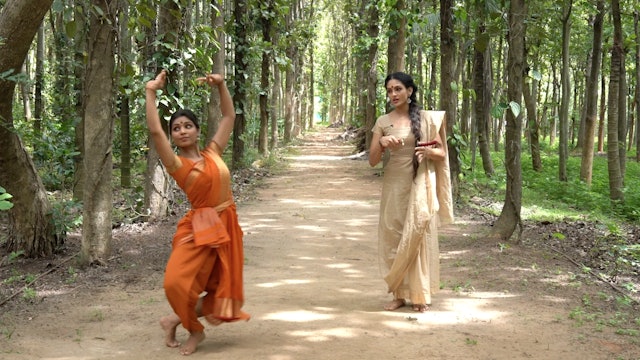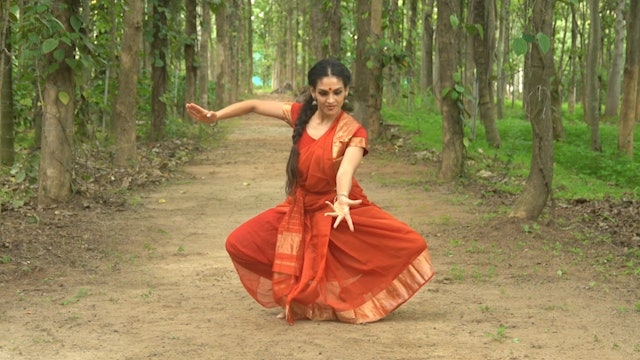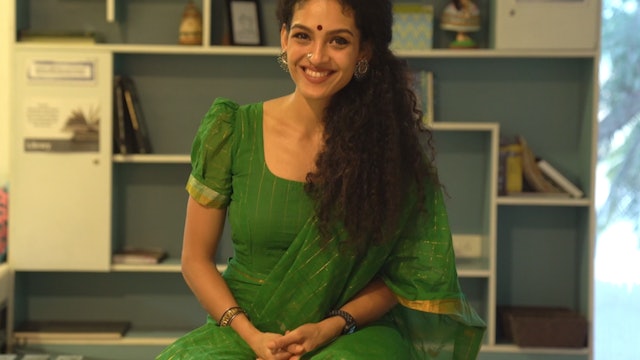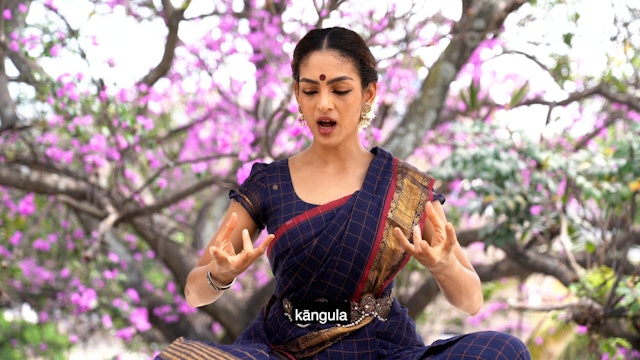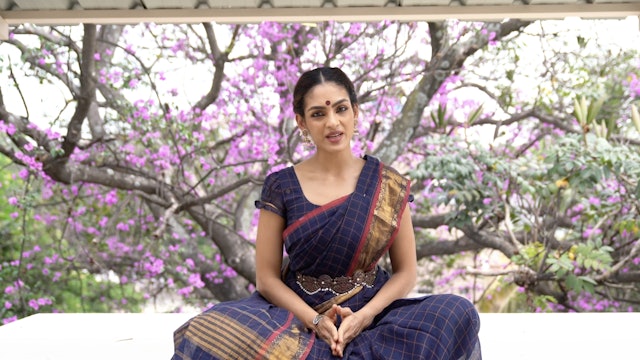Playlist 3
Please remember to progress to this playlist after repeating Playlist 2 for a minimum of 5 to 6 times. This will ensure you have the leg strength to get through the Nritta portions in this.
Ideally, you are not meant to stop between the practice of Adavus, unless you experience knee or lower back pain. Try to go through the whole playlist without stopping, until you reach the Jathi.
-
General mobility
This is a great session to do on a day when you feel tight or sore. It opens up your body without expecting too much of it. You can also do it before you start a warm-up or after a strength or dance session. It is a session that is safe to practice early in the morning.
-
Hip Openers
This series can be practiced after a basic warm up, before beginning an Adavu practice.
The hip opener series will help you navigate through tight hips. It will help you mobilise your hips and enable you to push your thighs back while sitting in Araimandi. Please do this in combination with str...
-
Arm positions in adavus
The video explains muscle engagement and visualisation to make your arms work with finesse and clarity. The premise of the Raadha Kalpa method is that the movement of the limbs must arise from the core. This video explains the logic of muscular engagement such that the arms are not disconnected f...
-
Thattadavu 1
The Thattadavu introduces concepts of rhythm to the beginner student through various patters of striking the floor with the foot. Do these in sequence to progressively build clarity in the articulation of the foot with the floor. Keep your hips stable and try not to move from side to side. It is ...
-
Thattadavu 2
The Thattadavu introduces concepts of rhythm to the beginner student through various patters of striking the floor with the foot. Do these in sequence to progressively build clarity in the articulation of the foot with the floor. Keep your hips stable and try not to move from side to side. It is ...
-
Thattadavu 3
The Thattadavu introduces concepts of rhythm to the beginner student through various patters of striking the floor with the foot. Do these in sequence to progressively build clarity in the articulation of the foot with the floor. Keep your hips stable and try not to move from side to side. It is ...
-
Thattaduvu 4
The Thattadavu introduces concepts of rhythm to the beginner student through various patters of striking the floor with the foot. Do these in sequence to progressively build clarity in the articulation of the foot with the floor. Keep your hips stable and try not to move from side to side. It is ...
-
Thattadavu 5
The Thattadavu introduces concepts of rhythm to the beginner student through various patters of striking the floor with the foot. Do these in sequence to progressively build clarity in the articulation of the foot with the floor. Keep your hips stable and try not to move from side to side. It is ...
-
Thattadavu 6
The Thattadavu introduces concepts of rhythm to the beginner student through various patters of striking the floor with the foot. Do these in sequence to progressively build clarity in the articulation of the foot with the floor. Keep your hips stable and try not to move from side to side. It is ...
-
Thattadavu 7
The Thattadavu introduces concepts of rhythm to the beginner student through various patters of striking the floor with the foot. Do these in sequence to progressively build clarity in the articulation of the foot with the floor. Keep your hips stable and try not to move from side to side. It is ...
-
Naatadavu part 1
"Naatu", means to stretch. The Naataduvus stretch either one of the legs at the knee, while the foot is in Anchitam. (flexed position) There are many different varieties of Naataduvus. They vary based on the choices made in torso movement and direction of stretch and arm positions.
-
Naatadavu 1
This Adavu has a stretching action in the leg where the foot is flexed and the heel is placed on the floor. The alignment of the hip bones is important in this. The turn-out and stability in the Araimandi position of the dancer must have developed by the time he/she starts the Naatadavu. If this ...
-
Naatadavu 2
This Adavu has a stretching action in the leg where the foot is flexed and the heel is placed on the floor. The alignment of the hip bones is important in this. The turn-out and stability in the Araimandi position of the dancer must have developed by the time he/she starts the Naatadavu.
The se...
-
Naatadavu 3
The third Naatadavu stretches the leg out to the front. If you are unable to keep your back straight when doing this, please refer to the flexibility section and practice the tips for forward bends and try again.
-
Naatadavu part 2
This is a continuation of Naataduvu Part 1. It deals with a few more varieties of Naataduvus
-
Naatadavu 4
The 4th Naatadavu expects a little more stability in the body. Please practice any of the Strength sections that work on lunges and squats, to achieve a deep lunge in this Adavu.
-
Naatadavu 5
The 5th Naatadavu is fairly easier to execute if you are clear with the 3rd and 4th Naatadavu. The bend is in the diagonal, and the length of the back must be maintained. The Swastikam introduced in the second Naatadavu is used again. So as long as there has been clarity so far, this will be an e...
-
Naatadavu 6
If you are unable to get up from the Muzhumandi position on the beat in the 3rd speed, please revisit the leg strength exercises in the exercise section. Pay special attention to the side squats. Also practice the hip- opener exercises that are present in the flexibility section.
-
Sarvalagu jathi 1: Instructions
The instructions teach the Jathi step by step so you can follow and understand with clarity.
-
Sarvalaghu Jathi 1
This Jathi has an instructional video. The counts for all the Sarvalaghu Jathis are all in 4 counts. Please watch and try to learn the Jathi for practice.
Please keep in mind that the Raadha Kalpa method likes to reinforce the idea of neutrality in Nritta patterns that are not placed within a c...
-
Talam: Lecture 1
This short lecture deals with the basics of Talam. The meaning of rhythm within the context of Bharatanatyam and our understanding of it. It deals with the basics of Talam according to the Carnatic music tradition.
-
Asamyukta Hasta
The Asamyuta hastas, as described in the Abhinaya Darpana are 28 in number.
These Hastas are used as embellishments in adavus as well as to communicate meaning gesturally, The Viniyogas in the Abhinaya Darpana describe a number of possible gestural implications for each Hasta.
Please refer to...
-
Samyukta Hasta
The Asamyuta hastas, as described in the Abhinaya Darpana are 28 in number.
These Hastas are used primarily communicate meaning gesturally, The Viniyogas in the Abhinaya Darpana describe a number of possible gestural implications for each Hasta.
Please refer to the Shloka below for pronunciat...
-
Shirobheda Abhinayadarpanam
The Shirobhedas, as described in the Abhinaya Darpana are 9 in number.
These Shirobhedas, or gestures of the head are used primarily communicate meaning gesturally, and also used for specificity in Nritta.Please refer to the Shloka below for pronunciation. Please note that the separate movement...

